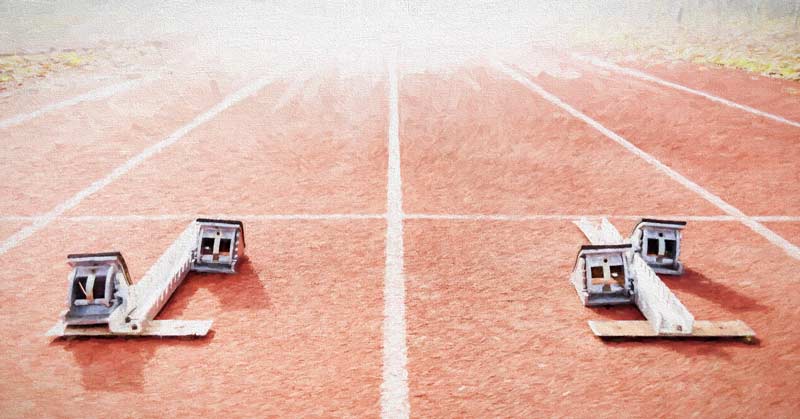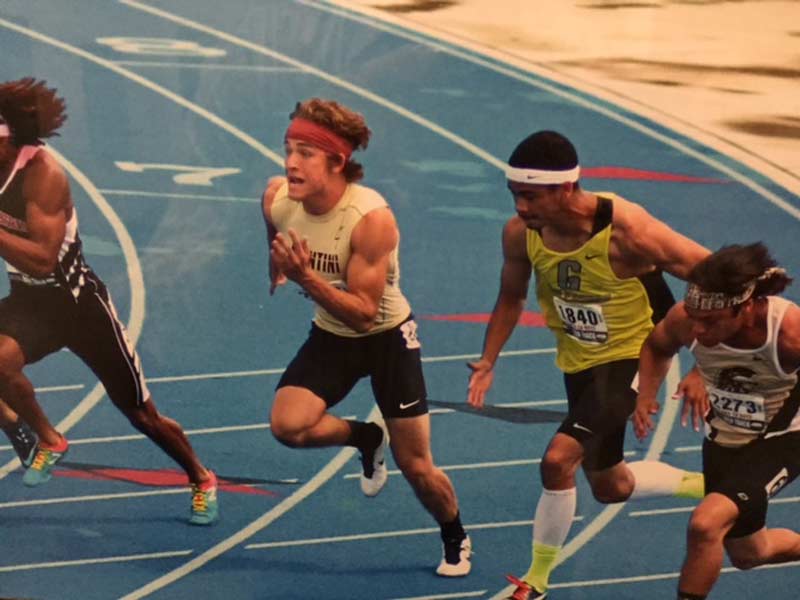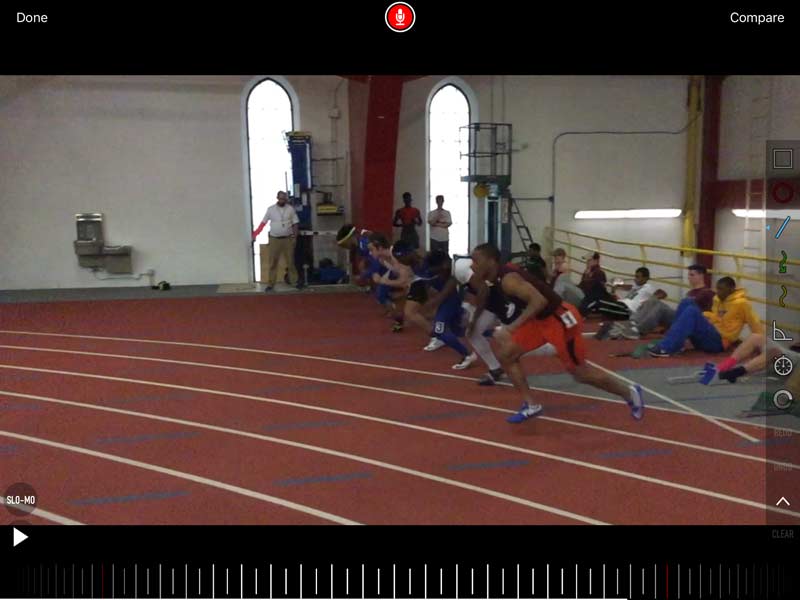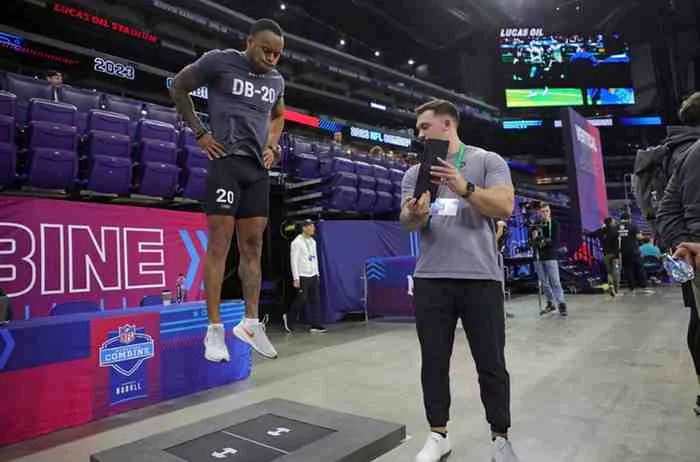[mashshare]

In this world of Instagram, YouTube, and all other media that show us how to do something, we strive to get our athletes to look the part. Sometimes, however, it’s better to understand your athlete’s individual challenges than to force them to look like the picture you’ve seen on the Internet or Twitter.
Case in point is my junior sprinter who was fourth in the state of Illinois for the class of 2A in the 100m Dash. I have been haunted by a picture of him in the finals on his second step of the race.

My sprinter had a habit of picking his head up in his start. More specifically, he looked at the gun when it fired and then he stood and ran. In this case, it cost him a step in the finals of a race where athletes cannot afford to give up a step.
Video 1. Losing a step in the start.
I decided to spend the summer and winter working on his start (I lose him in the fall to football) after studying perfect starts on Altis.world and reading that, if an athlete can’t get the start of the race correct, he can’t finish properly. My sprinter studied video on YouTube and ALTIS, and we tried to break down his starts to perfect the technique; to look perfect.
To check if he increased speed, I placed timers at 5, 10, 20, 30 and 40m. I also filmed his starts to see how his technique looked and to match starts with times.
To train to the perfect position, I suspended his body with jump stretch bands so he could get used to moving into position by unweighting his torso without feeling the urge to break at the waist. Then we went out and drilled.
As his position started to look better, his times did not improve; they stayed about the same. But he looked like he was supposed to look. Once he mastered the move, he cut his speed to sub 3.9 30’s in flats in a hallway. He was moving for a 16-year-old athlete. (I’m sure the 1080 Sprint had a lot to do with his drop).
In the finals of his first meet after beginning the training, at Plainfield North Invitational, my sprinter heard the bang, looked up to find the gun, stood up, and ran just like he did before the new training. The guy who beat him already had a step on him at this point–the first step of the race. It didn’t help that he pulled up early as well. In practice, someone says “set go” or “go,” there is no gunshot. We learned it was the intensity of a meet or the bang from a gun that seems to instantly change him neurologically.
My job as a coach is to make decisions to position my athletes to accomplish their goals. My sprinter’s goal was to not lose, and I tried to force him to be something that he was not. So we made more changes.
First, I broke out my old FinishLynx ReacTime. It measures power output and reaction time from the blocks. With the ALTIS start, my sprinter’s reaction time was over 0.23 (under 0.15 is good) and his power was low. The ReacTime also plays a recording of a gun going off. Because I couldn’t neurologically stop him from “peeking,” I tried to activate him in positions of power and positions of transition. I activated his vision, which was weak when he looked up, by training him with colored glasses.
Eventually, I ran out of bullets and used that to our advantage and went Ben Johnson, but without the drugs. We pulled his blocks back and let him look up at the gun. This eliminated his desire to snap his head up and pop up or stand.
What happened? In practice, he reduced his reaction time to 0.15. His power in the blocks skyrocketed from 3400 to 27000. What happened in his next race? He ran 6.88 in the 60, FAT. The previous week, he was 6.2 in the 55, handheld.

For three hours, he was the fastest man in Illinois, until another athlete ran a 6.85 somewhere in Southern Illinois.
While a photo perfect start may be great, sometimes you have to go with what you have. The body’s immediate reaction is to protect and defend. My sprinter was a very visual person and I took that away from him, subconsciously placing him in a fight or flight mode which delayed reaction time and decreased power output and relaxation.
Although I would love to have picture perfect starts with my athlete, I think he liked winning a little bit better.
Since you’re here…
…we have a small favor to ask. More people are reading SimpliFaster than ever, and each week we bring you compelling content from coaches, sport scientists, and physiotherapists who are devoted to building better athletes. Please take a moment to share the articles on social media, engage the authors with questions and comments below, and link to articles when appropriate if you have a blog or participate on forums of related topics. — SF
[mashshare]




